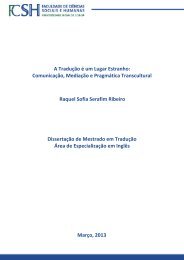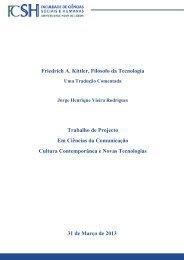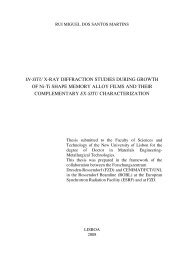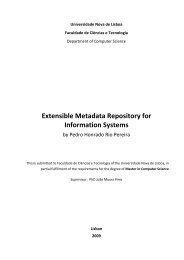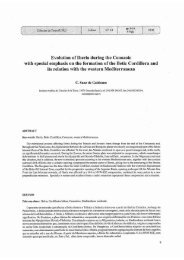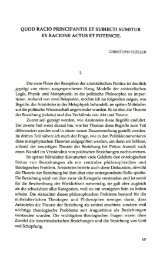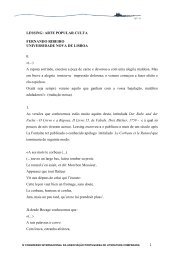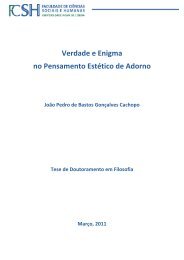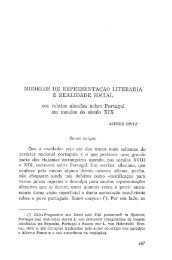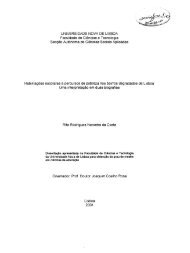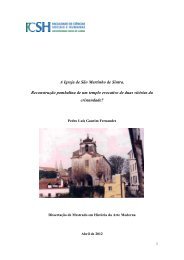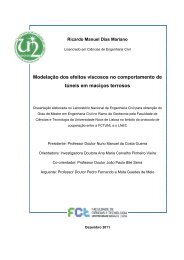Elias Manuel Morgado Pinheiro Dissertação de Mestrado em ...
Elias Manuel Morgado Pinheiro Dissertação de Mestrado em ...
Elias Manuel Morgado Pinheiro Dissertação de Mestrado em ...
You also want an ePaper? Increase the reach of your titles
YUMPU automatically turns print PDFs into web optimized ePapers that Google loves.
puncture marks ma<strong>de</strong> by harpoon points 73 . Slaughter of domestic animals with throwing<br />
weapons in extr<strong>em</strong>ely impractical, therefore suggesting that at least to some extent, wild<br />
horses were being hunted. However, one horse cranium was found with a blunt round<br />
fracture in the maxilla. This type of fracture is usually the result of pole-axing, a method<br />
of slaughter used throughout Russia and Kazakhstan in the Bronze Age 74 . Unlike<br />
harpooning, pole-axing was mostly used in the slaughtering of domestic animals. The<br />
animal is immobilised by two ropes tied around its neck, and hold in place by two<br />
individuals. The animal is then struck in the cranium with a pole-axe, which if done<br />
correctly, would cause instant <strong>de</strong>ath, leaving the characteristic round fracture (fig. 14)<br />
Fig. 14 Mo<strong>de</strong>rn day Mongolian horse cranium with pole-axe inflicted fracture, after Olsen, 2008, fig.17.4<br />
However, in the Botai cranium, the fracture was located in the maxilla 75 , rather<br />
than on the internal periorbital region. This can be explained by a botched att<strong>em</strong>pt at<br />
killing the animal, but it can also be a completely unrelated fracture.<br />
Fig. 15 Horse cranium with circular <strong>de</strong>pressed fracture in maxilla, possibly from pole-axing, after Olsen, 2003,<br />
fig 7.4<br />
73 Olsen, 2003, p. 85<br />
74 Olsen, 2008, p. 259<br />
75 Olsen, 2008, p.259<br />
44



